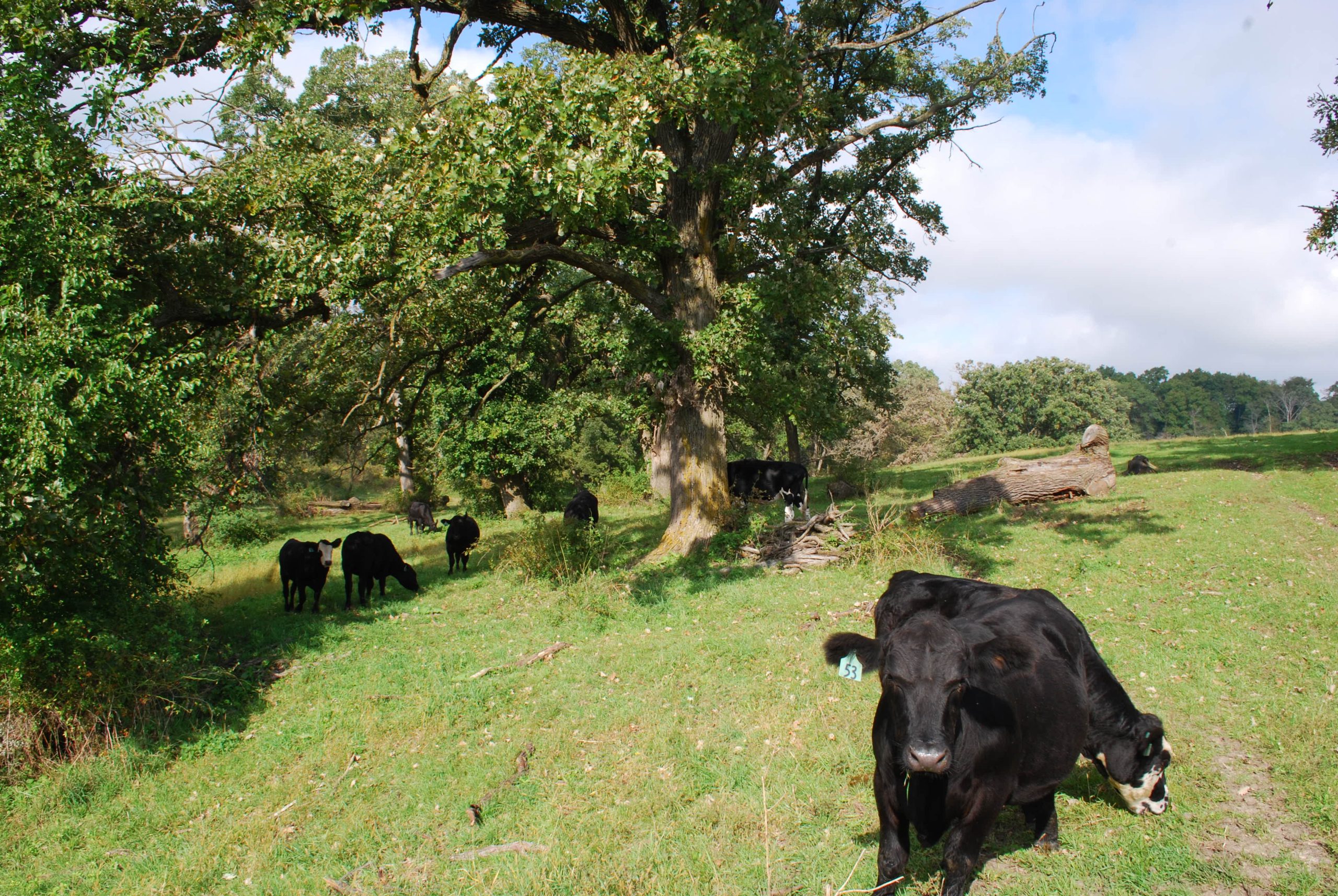Why Grass Fed is Better
Grass fed beef has unique flavors and qualities. It was not so long ago that all cattle in the United States, were fed strictly grass. In the 1950s, in an attempt to decrease the uncertainties of farming, it became popular to feed cattle grain. This resulted in large feedlots with overcrowded conditions and an increase in sick animals. The uncertainty of good weather and great pasture, was no longer a problem. However due to the increase in illness from overcrowding and diet change, the use of antibiotics and vaccinations became routine. Growth hormones are commonly used to speed up the growth of the animals. Herbicides and pesticides are also commonly ingested via the grain. Crazy as this may sound, feedlot cattle are commonly fed “by-product feedstuffs”. This money saving tactic includes candy, bakery wastes, potato waste, starch, and pasta. Pretty bad diet for an animal that was meant to eat grass alone! Lets look at additional reasons why grass fed beef is better than grain fed beef:

Higher in Vitamin A
Vitamin A is best known as support for good vision. In addition, it is important for bone growth, proper cell division, reproduction, and regulating the immune system by supporting white blood cell production and function.
Higher in B Vitamins (thiamin and riboflavin)
Thiamin is important in energy production, healthy nerve and muscle function, and a healthy heart. Riboflavin protects cells and energy production.
Higher in Calcium, Magnesium, and Potassium
Calcium, as you know, helps with bone growth but it also supports nerves, muscles and proper blood clotting. Magnesium helps to quiet nerves and muscles. It works with calcium to build strong bones and assists blood flow. Potassium works along side calcium and magnesium for acid base balance. It is also important in electrolyte balance and blood pressure control.
Higher in Vitamin E
Vitamin E is associated with a decreased risk of heart disease, cancer, and its anti-aging properties.
Great ratio of Omega-3 Fatty Acids (good fat)
Studies show that Omega-3 fats are heart-friendly, protect the brain, and may reduce your risk of cancer.
Higher in Conjugated Linoleic Acid (CLA)
Another “good fat”, CLA provides strong protection from cancer.


Lower in Omega-6 Fatty Acids
Omega-6 fats play a role in good health, however the high amounts of Omega-6 that Americans eat increases the rate of obesity, diabetes, inflammatory diseases, and cancer.
Higher in Protein and lower in Total Fat and Calories
“A 6-ounce steak from a grass finished steer can have 100 fewer calories than a 6-ounce steak from a grain-fed steer” (Eat Wild).
Reduced exposure to “Staph“ infection and E. Coli
It is estimated that almost half of the meat and poultry sold in the U.S. is contaminated by the bacteria staphylococcus aureus. It is not commonly tested for. The factory farms are an environment where low dose antibiotics, regularly fed to animals, create drug-resistant bacteria which move from animal to human.
Much less illness
If an animal should become ill they would be separated from the other cattle. To date all of our animals have been healthy.
Humane for the animals
The animals have plenty of sunshine, fresh water, and free range in beautiful pastures and woods.
Grassfed beef is delicious
It has a clean flavor, lightly marbled, and juicy.
Environmentally responsible and sustainable

Bibliography
Eagan, Shelley. “WhyGrassFedBeef.” Why Grass Fed Beef. Proffitt
Family Cattle Company, n.d. Web. 30 Sept. 2013.
“Health Benefits of Grass-Fed Products.” Eat Wild. N.p., n.d. Web. 30
Sept. 2013.
“Why Eat Grass-Fed Beef?” Grass-Fed Beef. Mountain Lane Farm, n.d.
Web. 30 Sept. 2013.


